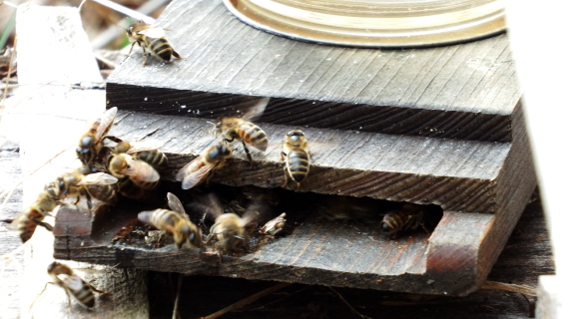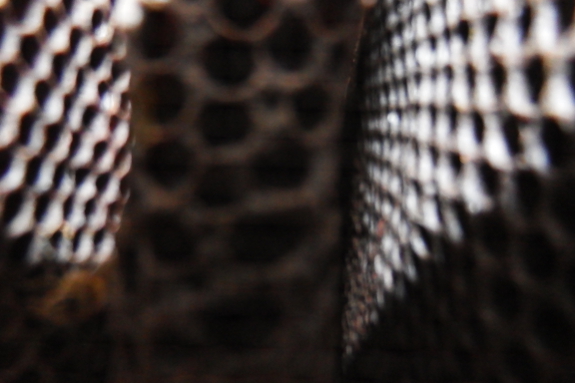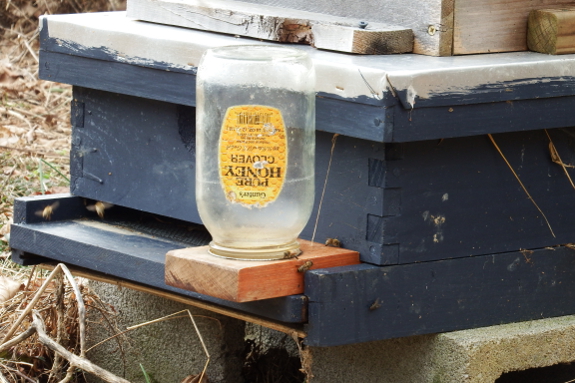
No free lunch for bees

As we near the end of our first decade homesteading, I'm slowly but surely realizing that there is no free lunch on a farm. Seed balls look pretty but produce few surviving plants,
the dream of an entirely self-sufficient chicken is (for most of us)
only a dream, and you have to feed bees if you want them to feed you.

Natural
beekeeping suggests that you should only feed your hive in the fall if
they otherwise wouldn't have enough stores to make it through the
winter. Using that methodology, I've finally learned to keep healthy bees...but not to harvest honey.
Maybe if we lived in a
much warmer climate where bees can fly and flowers bloom copiously for
nine months out of the year, our hive would make excess stores with no
sugar-water pick-me-up. But here, where we only enjoy five months
between first and last frost, I suspect spring feeding is mandatory to
get hives bulked up enough that they can harvest sufficient wild nectar
to feed both us and them.

To that end, we're taking advantage of some warm days to feed the bees. This hybrid hive
ate a pint in an afternoon, proving that their populations are high and
that I need to add another box if I don't want early bulking up to turn
into a swarm
like last year's. The Warre hive, in contrast, only sipped daintily at
their feeder, suggesting their numbers are low enough that they might
not even have survived without the bonus feeding.
I'm slowly working my way
toward a compromise between the high-impact, chemically treated bees
that produce all the honey you can buy in stores and the entirely
naturally raised bees that survive well but don't produce much at all.
The end result might be Langstroth hives fed early to bulk up their
numbers then managed with low-impact Warre methodology. Only time will
tell....
Want more in-depth information? Browse through our books.
Or explore more posts by date or by subject.
About us: Anna Hess and Mark Hamilton spent over a decade living self-sufficiently in the mountains of Virginia before moving north to start over from scratch in the foothills of Ohio. They've experimented with permaculture, no-till gardening, trailersteading, home-based microbusinesses and much more, writing about their adventures in both blogs and books.
Want to be notified when new comments are posted on this page? Click on the RSS button after you add a comment to subscribe to the comment feed, or simply check the box beside "email replies to me" while writing your comment.

I ran into an issue last year where I kept adding sugar water to my bee feeder because the bees were using it up so quickly. There was a lot of activity around the front of my hive but it wasn't until I noticed that the bees were fighting over the feeder that I realized another colony of bees had been helping themselves to my feeder. After all, they have about a five mile range were they may forage for resources but if little nectar is available, your neighbor's hive or a wild colony may be robbing yours.
I found that I could still feed my own bees if I added an entrance reducer to limit the numbers of bees that could enter the hive at a time. This way my bees could defend against any intruders more easily, but still get to the feeder from the inside. This entrance reducer may be as simple as a thin strip of wood that makes your hive entrance about an inch wide, depending on how much in and out traffic your hive normally has.